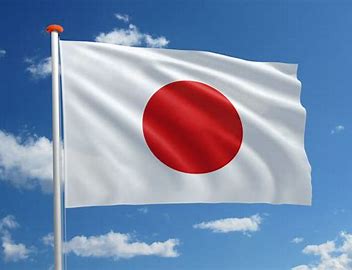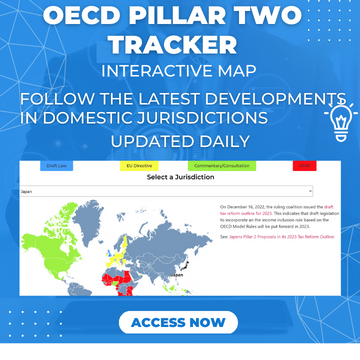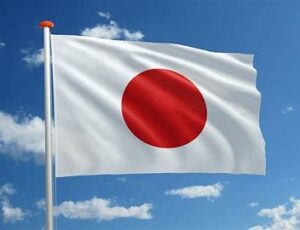As the CbC Report provides jurisdictional information on revenues, profit before tax, income tax paid, tax accrued, number of employees, stated capital, retained earnings tangible assets, determining total jurisdictional revenue for the purposes of the safe harbour is straightforward.
A Qualified CbC Report is one prepared using Qualified Financial Statements.
Total Revenue for CbCR purposes includes extraordinary income and gains from investment activities.
All of the entity level data used in the Transitional CbCR Safe Harbour (e.g. Total Revenue, PBT, the Income Tax Expense, payroll expense, and carrying value of assets) must come from the same Qualified Financial Statements.
If different financial statements are used for the CbCR Safe Harbour data, the CbC Safe Harbour won’t apply.
This means that either the accounts used to prepare the consolidated financial accounts of the UPE or the separate financial statements the Constituent Entity must be used.
However, if the deferred tax element of the income tax expense in the Entity’s separate financial statements is reflected only in the accounting entries that are held at the level of the consolidating Parent Entity in the preparation of the consolidated financial accounts (instead of the Entity’s own reporting package or separate financial statements), then the deferred tax expense from the accounting entries used by the the consolidating Parent Entity in the preparation of the consolidated financial accounts must be used.
For the purposes of the CbC Safe Harbour, all entities in a jurisdiction must also gather data from the same type of Qualified Financial Statements.
However, if the Constituent Entities in a Jurisdiction include Non-Material Constituent Entities (NMCEs) or Permanent Establishments (PEs), the data for these can come from any data source allowed under the OECD Commentary or Administrative Guidance.
The Administrative Guidance confirms that Qualified Financial Statements can include separate financial statements of a Constituent Entity as long as they are prepared in accordance with either an Acceptable Financial Accounting Standard or an Authorised Financial Accounting Standard, if the information is maintained based on that accounting standard and it is reliable. This can therefore include financial statements for statutory reporting purposes.
In order for a CbC report to be a qualifying CbC report, it is not necessary for the data for different jurisdictions to be based on the same Qualified Financial Statements. For instance, a CbC Report would still be a Qualified CbC Report if it is based on data from the UPE’s CFS for some jurisdictions and data from local GAAP accounts for other jurisdictions.
The December 2023 Administrative Guidance confirms that an MNE is not permitted to make adjustments to the data drawn from Qualified Financial Statements in a CbC Report even if the adjustments are consistent with the GloBE Rules, (e.g. for post-year end transfer pricing adjustments). Making an adjustment would prevent the CbCR Safe Harbour from applying.
Determining what Financial Statements are to be used for PEs has not been a straightforward issue as a PE is a tax concept not an accounting concept. As such revenue and profit data is unlikely to be available from the UPE’s Consolidated Financial Statements or the Main Entity’s local financial accounts.
The December Administrative Guidance provides that if the PE does prepare Qualified Financial Statements, they are to be used.
If they are not available, the MNE Group can determine the portion of the Main Entity’s Total Revenue and PBT that is attributable to the PE using separate financial statements prepared by the Main Entity for the PE for financial reporting, regulatory, tax reporting, or internal management control purposes.
Again as, with the Total Revenue figure this is extracted directly from the Qualified CbC Report given this information is already provided in the CbCR Report.
Note that for members of JV groups the Profit/Loss before income tax can be taken directly from Qualified Financial Statements. This is because for CbCR purposes Joint Ventures and JV Subsidiaries are not constituent entities of an MNE group as they are reported under the equity method.
Treatment of Net Unrealised Fair Value Loss
The Profit/Loss before income tax is reduced by any ‘Net Unrealised Fair Value Losses’ if those losses exceed 50 million Euros.
These are arising from changes in fair value of Ownership Interests (except for Portfolio Shareholdings), as reduced by any gains.
For GloBE purposes they would generally be excluded anyway as they would be treated as Excluded Equity Gains or Losses.
Income Tax Expense
The income tax expense is used for the simplified ETR test. The CbC Report provides jurisdictional information on Income Tax Paid (on a Cash Basis) and Income Tax Accrued (Current Year). Unlike both Total Revenue and Profit/Loss before Income Tax, the income tax expense used for the simplified ETR test is not taken directly from the CbCR report.
For Safe Harbour purposes, the figure used is a jurisdiction’s income tax expense as reported on the MNE Group’s Qualified Financial Statements (ie the total for all Constituent Entities resident in that jurisdiction for CbCR purposes), after eliminating:
– any taxes that are not Covered Taxes; and
– uncertain tax positions reported in the MNE Group’s Qualified Financial Statements.
Using the financial accounting income tax expense means that deferred tax is also included (as under the general GloBE rules – albeit without any GloBE amendments).
MNEs can determine the income tax expense before any adjustments for uncertain tax positions by:
Income Tax Accrued (Current Year) + Deferred Tax Expense
This would then need to be reviewed to eliminate any non-covered taxes for GloBE purposes.
The deferred tax expense is provided in the Qualified Financial Statements and Income Tax Accrued (Current Year) is included in the CbCR Report.
The Income Tax Accrued (Current Year) is the amount of the accrued current tax expense recorded on taxable profits or losses for the Fiscal Year of all Constituent Entities resident for tax purposes in the relevant tax jurisdiction irrespective of whether or not the tax has been paid. It will include withholding tax accrued but not prior-year adjustments or deferred tax.
Substance-based Income Exclusion (SBIE)
The SBIE is used for the Routine Profits Test. An MNE would need to calculate the jurisdiction’s SBIE in accordance with the GloBE Rules (including the Commentary and the Agreed Administrative Guidance).
The SBIE amount for the Routine Profits Test does not include payroll and tangible assets of Entities that are not Constituent Entities under the CbCR (e.g., Entities held for Sale) or under GloBE (e.g., Excluded Entities).
Similarly if a Constituent Entity is located in different jurisdictions under CbCR and GloBE, its payroll and tangible assets are excluded from the SBIE amount for the routine profit test of both jurisdictions
Note that a jurisdiction with a loss or zero profits will not have income that exceeds the routine profits amount, and therefore will always meet the routine profits test. It will not be necessary for an MNE to calculate the jurisdiction’s SBIE in these circumstances.
MNEs not required to file CbC Reports
Certain MNE Groups are not required to prepare and file CbCR reports (eg domestic groups). Would this, therefore mean they cannot utilise the CbCR Safe Harbour?
The December 2023 Administrative Guidance provides that they can still qualify for the Transitional CbCR Safe Harbour if they complete section 2.2.1.3(a) of the GloBE Information Return using the data from Qualified Financial Statements that would have been reported as Total Revenue and PBT in a Qualified CbC Report if the MNE Group were required to file a CbC Report.
For this purposes, “as reported in a Qualified CbC Report” means the amounts that would have been reported in a Qualified CbC Report if the MNE Group were required to file a CbC Report in accordance with the CbC requirements in the UPE Jurisdiction (or, if the UPE Jurisdiction does not have CbC requirements, the amounts that would have been reported in accordance with the OECD BEPS Action 13 Final Report and the OECD Guidance on the Implementation of Country-by-Country Reporting).
The UKs 2023 Autumn Finance Bill reflects these requirements and it inserts a new Section 251A which defines what is a qualifying CbC Report.
It states that a CbC Report is “qualifying” if the information relating to the territory is prepared on the basis of qualified financial statements of the multinational group.
Where there is no requirement under the law of any territory for a CbC report to be prepared and filed in respect of a multinational group, the filing member may include, in the information return in which the election is made, the information that would have been in such a report:
– prepared in accordance with legislation implementing the OECD’s guidance on country-by-country reporting under the law of the territory of the ultimate parent, or
– where there is no such legislation, prepared in accordance with that guidance.
Where this information has been included in that information return, that information is to be treated as if it were a country-by-country report for the purposes of the Transitional CbCR Safe Harbour.
Differences between the Determination of Jurisdictional Revenue and Profit under CbCR and GloBE.
In some cases relying on CbC data could put an MNE in a worse position than undertaking a full GloBE calculation. However, this would need to be weighed against the compliance benefits.
Common examples include:
– Capital gains on shares are included as income in the CbCR, but exempt for tax purposes.
– Dividends from minority investments are included as income in the CbCR, but exempt for tax purposes. (Dividends from consolidated entities are excluded from CBCR income, so that tax treatment aligns.)
– Revaluation gains, mark to market movements, foreign exchange results are all included as CbCR income, if they are income in the Financial Statements. For tax purposes, these gains are usually deferred until realisation.
– No special regimes for stock options and pension contributions means that CbCR income follows the Financial Statements, which often differs from the tax treatment.
– Income and tax allocation rules under the ETR Test are less sophisticated than the full GloBE rules.
– CbCR only sees Permanent Establishments (PEs) as a separate Constituent Entity if they prepare separate Financial Statements. As a result, some PEs are invisible under CbCR, meaning their income / taxes are attributed directly to the head office.
– CbCR does not correct for non-arms length prices, hybrid financing or other structural tax / book differences.
– The tax line in Financial Statements will only capture deferred tax movement that have actually been booked in the accounts. For instance, utilization of tax losses for which no DTA has been booked reduces ETR.
There are certain cases (such as large deferred tax liabilities that don’t unwind within five years) where using CbCR data may be preferable.
In addition, GloBE is broader than CbCR because it also applies to Group Entities that have been excluded from the Consolidated Financial Statements on the grounds that they are held for sale.
However, MNEs will need to ensure that the negative temporary differences between the CbCR data and Pillar Two don’t negatively impact the deferred tax position going forwards.
Exclusions
The following are excluded from the Transitional CbCR Safe Harbour:
– Stateless Constituent Entities;
– Multi-parented MNE Groups where a single Qualified CbC Report does not include the information of the combined groups;
– Jurisdictions with Constituent Entities that have elected to be subject to Eligible Distribution Tax Systems; and
– Jurisdictions that have not benefited from the Transitional CbCR Safe Harbour in a previous fiscal year in which the MNE Group is subject to the GloBE Rules, unless the MNE Group did not have any Constituent Entities in that jurisdiction in the previous year
The final exclusion should be particularly noted. The OECD rules apply what they call a “once out, always out” approach. As such if an MNE Group has not applied the Transitional CbCR Safe Harbour in a jurisdiction in a fiscal year in which it is subject to the GloBE Rules, it cannot qualify for the safe harbour for that jurisdiction in a subsequent year.
No Push-Down of Taxes on income of PEs, CFCs, and Hybrid Entities
The Simplified ETR test is calculated using the PBT data from a Qualified CbC Report
and the income tax expense from the Qualified Financial Statements.
The income tax expense used for the Simplified ETR test includes deferred tax and does not require any adjustments under GloBE (such as the allocation of CFC or Main Entity taxes), other than the removal of taxes which are not Covered Taxes and Uncertain Tax Positions.
The income tax expense in the jurisdiction in which the PE is located on the PE’s
income must be allocated exclusively to the PE’s jurisdiction and can only be included in the Simplified ETR Test for the PE jurisdiction. That income tax expense shall not be included in the Simplified ETR Test for the Main Entity’s jurisdiction.
Where the Transitional CbCR Safe Harbour does not apply in a jurisdiction in which a PE, CFC or Hybrid Entity is located, the MNE Group will need to compute the jurisdictional ETR under the GloBE Rules and take into account Covered Taxes paid or accrued on its income by the Parent or the Main Entity. The December 2023 Administrative Guidance provides that taxes paid under a CFC Tax Regime or a taxable branch regime do not need to be allocated for purposes of determining the Simplified ETR for the jurisdiction of the Constituent Entity-Owner or Main Entity, even though part or all of the taxes are also taken into account in the GloBE ETR computations of a jurisdiction that includes a CFC, PE or Hybrid Entity.
Joint Ventures and JV Subsidiaries
For the purposes of the Transitional CbCR Safe Harbour, JVs and JV subsidiaries are subject to the standard rules, except that their profit or loss before tax is not based on CbCR data, but is taken directly from Qualified Financial Statements.
The safe harbour calculations are the same as the general GloBE Rules, and they are treated as if they were members of a separate MNE Group.
For example, if three Constituent Entities and a Joint Venture were located in the same jurisdiction, two separate safe harbour computations need to be undertaken (one for the Constituent Entities and one for the joint venture).
Minority-Owned Constituent Entities (MOCEs)
For general GloBE purposes, MOCEs are not subject to the standard jurisdictional blending and their ETR is determined separately.
For CbCR purposes, a MOCE is treated as a standard constituent entities as they are fully consolidated and they are not subject to special treatment.
For the purposes of the CbCR Safe Harbour, the CbCR position is taken and there is no special treatment. As such, the income and taxes of the MOCE will be blended with that of other Group Entities under the Transitional CbCR Safe Harbour
Flow-Through UPEs
For general GloBE purposes, a Flow-through UPE is located in its jurisdiction of creation, however, under CbCR, a Flow-through UPE is a stateless Entity.
The general GloBE rules apply a special rule to flow-through UPEs which disapplies flow-through treatment because their owners are not Constituent Entities of the MNE Group. Article 7.1 therefore allows the GloBE Income of the UPE to be reduced by the amount of income that is allocated to its owners provided that those owners are subject to tax at a rate of at least 15%.
If Article 7.1 applies, and the GloBE Income of the Flow-through UPE is reduced to zero, then the Transitional CbCR Safe Harbour can apply to the Entities located in the jurisdiction.
If Article 7.1 does not apply (or not all the income of the Flow-through UPE is reduced to zero), then the Transitional CbCR Safe Harbour cannot apply to the UPE jurisdiction (as the information in the CbC Report and GloBE would differ).
UPEs subject to Deductible Dividend Regimes
The general GloBE rules includes a special provision in Article 7.2 to reduce a UPE’s GloBE Income by the amount of the Deductible Dividends provided certain conditions are met (e.g., the shareholder is subject to tax on the dividend at a nominal rate of at least 15%).
For the purposes of the CbCR safe harbour, the same deduction that would be otherwise granted under Article 7.2 is made to the Profit or Loss before Income Tax of the jurisdiction of the UPE (and the UPE’s taxes are removed from the safe harbour computations).
This applies if the conditions of Article 7.2 are met and operates in the same way as in the general rules.
Entities subject to Eligible Distribution Tax Systems
Article 7.3 of the GloBE rules includes special provisions for entities subject to an Eligible Distribution Tax System that allows them to recognize a Deemed Distribution Tax in a year for a tax that would be paid during a later year (up to four years).
During the Transition Period, in-scope MNE Groups can elect to treat Entities subject to Eligible Distribution Tax Systems for the first Fiscal Year in accordance with Article 7.3 (which applies to all Constituent Entities in a jurisdiction).
They would therefore decide whether to apply the Transitional CbCR Safe Harbour to the Constituent Entities. If the Transitional CbCR Safe Harbour is not applied, the MNE would decide whether to apply Article 7.3.
Once an MNE elects to apply Article 7.3, it would then not be eligible to apply the Transitional CbCR Safe Harbour to jurisdictions with Constituent Entities subject to Eligible Distribution Tax Systems through the rest of the Transition Period.
If the MNE decides not to apply Article 7.3 for the first Fiscal Year, it can access the Transitional CbCR Safe Harbour in a jurisdiction with an Eligible Distribution Tax System.
Investment Entities and Insurance Investment Entities
Under the GloBE rules, Investment Entities are not subject to the standard jurisdictional blending and their ETR is calculated separately.
There are two specific elections available to MNEs in Articles 7.5 and 7.6 of the OECD Model Rules.
Article 7.5 allows an MNE to elect to treat an Investment Entity as a Tax Transparent Entity where it meets the requirements. The GloBE Income or Loss and Adjusted Covered Taxes of the Investment Entity are then allocated to the Constituent Entity-owner.
Article 7.6 allows an MNE to elect to exclude the GloBE Income or Loss of an Investment Entity and to include distributions made by the Entity to be included in the GloBE Income or Loss of the Constituent Entity-owner. If distributions are not made within a four-year period, the MNE is subject to a Top-up Tax that results from multiplying the portion of the Undistributed Net GloBE Income by 15%.
Non-tax transparent Investment Entities are not subject to any special treatment under CbCR and their Profit or Loss before Income Tax is reported in their jurisdiction of tax residence.
For the purposes of the CbCR Safe Harbour the Investment Entity is excluded from the benefit of the Transitional CbCR Safe Harbour and the MNE Group will apply the ordinary GloBE Rules to determine whether any Top-up Tax arises in respect of the GloBE Income of that Investment Entity, subject to the elections under Articles 7.5 and 7.6.
However, there are two key differences.
Firstly, an Investment Entity that does not elect to apply the treatment provided under Articles 7.5 or 7.6. is not required to undertake a separate GloBE calculation where the Investment Entity and its Constituent Entity-owners are resident (for CbCR purposes) in the same jurisdiction.
It is treated, effectively, as a standard constituent entity of the MNE group (nb both the UK and Canadian legislation use this terminology). Therefore the investment entity would be included in the calculations and would also be covered by the safe harbour (if one or more of the tests are met)).
Secondly, when applying the Transitional CbCR Safe Harbour in the jurisdictions where the Constituent Entity-owner and the Investment Entity are located, the jurisdictional Profit or Loss before Income Tax should be adjusted so that the income and taxes of the Investment Entity are only taken into account in the owner’s jurisdiction.
The December 2023 OECD Administrative Guidance provides that where a Constituent Entity has entered into a hybrid arbitrage arrangement, the Transitional CbCR Safe Harbour is not available to the MNE Group where the hybrid arbitrage arrangement result in a jurisdiction qualifying for the safe harbour.
These are transactions that exploit differences between tax and financial accounting treatment, to allow a Constituent Entity to qualify for the safe harbour and thereby avoid GloBE Top-up Tax.
– a duplicate tax recognition arrangement.
A deduction/non-inclusion arrangement is an arrangement under which one Constituent Entity directly or indirectly provides credit or makes an investment in another Constituent Entity that results in an expense or loss in the financial statements of a Constituent Entity to the extent that:
Insurance companies where arrangements include expenses relating to Additional Tier One Capital are excluded.
A duplicate loss arrangement is an arrangement that results in an expense or loss being included in the financial statement of a Constituent Entity to the extent that:
A duplicate tax recognition arrangement is an arrangement that results in more than one Constituent Entity including part or all of the same income tax expense in its:
unless the arrangement also results in the income subject to the tax being included in the relevant financial statements of each Constituent Entity.
The OECD Administrative Guidance includes specific rules to counteract the benefit of the Hybrid Arrangement where it was entered into/amended after December 15, 2022.
– exclude any expense or loss arising as a result of a deduction / non-inclusion arrangement or duplicate loss arrangement from the Jurisdiction’s PBT; and
– exclude any income tax expense arising as a result of a duplicate tax recognition arrangement from the Jurisdiction’s income tax expense.















